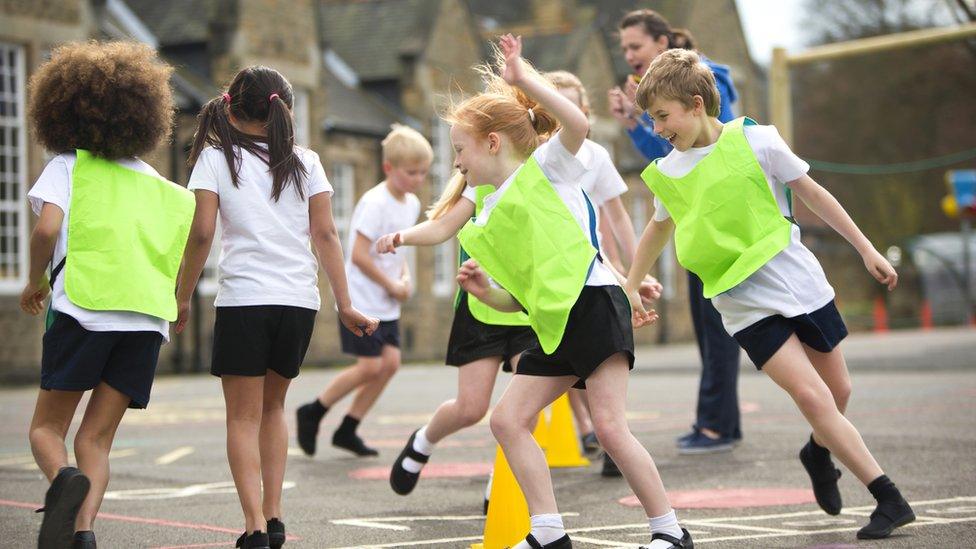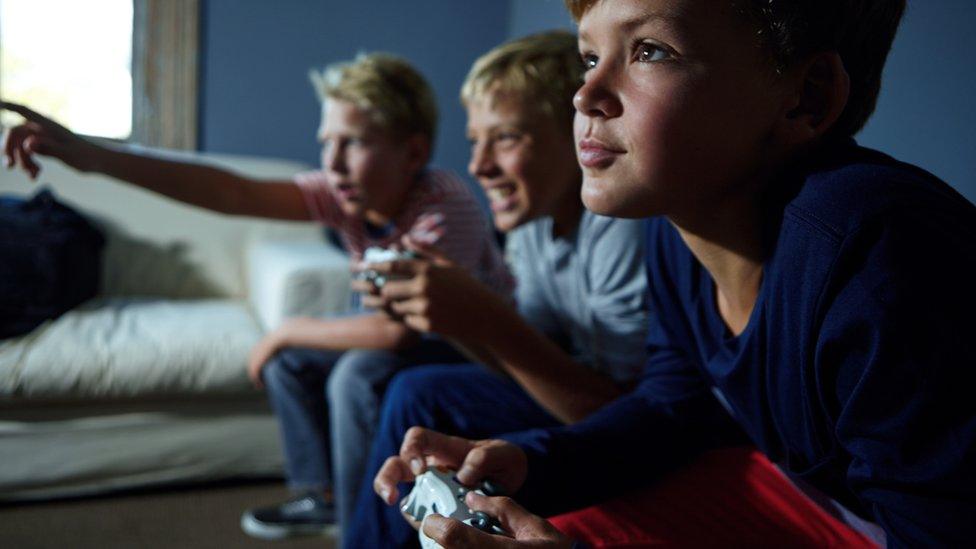Children 'become less active during primary years'
- Published
- comments

Children's physical activity levels drop significantly during their primary school years, research finds.
The Bristol University study, external found that between the ages of six and 11, children became 17 minutes less active a week with every year.
Researchers monitored the physical activity of 2,132 children from 57 schools across the South West of England between 2012 and 2018.
Children taking part in the study wore an accelerometer for five days.
This allowed the researchers to obtain an accurate picture of how many minutes per day the children participated in moderate-to-vigorous physical activity (MVPA) - enough to leave them slightly out of breath and sweaty.
The research, which was funded by the British Heart Foundation (BHF), found that 61% of children in Year 1 did at least an hour of MVPA per day.
But by Year 6, only 41% achieved this target - which is recommended by the UK's chief medical officers - of one hour of MVPA every day.

The study found a difference between girls and boys
The drop was particularly steep for girls, falling from 54% to 28% by the time they finished primary school.
"We saw marked differences in physical activity levels between boys and girls, with girls engaging in less MVPA and more sedentary time on both weekdays and weekends than boys at age six," the study says.
"Girls' MVPA also declined at a faster rate, so that the gap between boys and girls increases between ages 6 and 11."
It also found that there are differences by body mass index group by the age of 11.
For example, a child who is obese at age six, and remains so at age 11, took part in 10 minutes less MVPA per weekday at age 11 than a similar child of healthy weight at both ages.
But the study notes that the "data is from the area around a single UK city which was predominantly white British, which limits the ability to generalise to other settings, contexts and ethnic groups".
Lead researcher Prof Russell Jago said: "These numbers prove that more needs be done to ensure children keep active as they approach adolescence.
"This isn't about getting children to exercise more, but rather maintaining their activity levels.
"Developing early intervention strategies that help children retain activity levels could include after-school physical activity programmes, focusing on participation and enjoyment in addition to popular sports - and a greater emphasis on promoting weekend activities."

Older primary-age children became less active
Prof Jeremy Pearson, BHF's associate medical director, said: "Almost a third of children in the UK weigh more than they should, while one in four primary school children is not meeting the recommended levels of exercise.
"We know that children living with obesity are more likely to become obese adults - putting them at increased risk of developing heart and circulatory diseases and their risk factors, such as type 2 diabetes and high blood pressure, later in life.
"Staying active must be combined with policies that help families make healthy and informed choices, such as a 21:00 watershed on junk food marketing and restricting the promotion of unhealthy foods."
The research paper is published in the International Journal of Obesity.